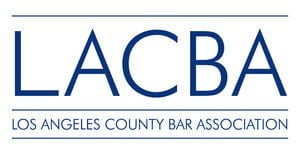What is Conspiracy?
In the simplest terms, when two or more people agree to commit a crime and take some action towards following through on that agreement, they have already committed a crime called conspiracy.

It might seem harmless just to talk about engaging in criminal activity without actually going through with it. But if any of the co-conspirators take an action towards carrying out the crime they agreed to commit, all of the parties to the agreement can be charged with a serious criminal offense, as defined by California Penal Code section 182.
California Penal Code 182 (182 PC) criminalizes conspiracy. A conspiracy occurs when more two or more people agree to commit a criminal offense, and then at least one of the co-conspirators takes a specific action in furtherance of the conspiracy. Conspiracy is a separate offense from the agreed-upon underlying crime, and does not require the underlying crime to actually take place.
Elements of the crime of conspiracy
The word “conspiracy” may conjure up images of dark secrets protected by nefarious agents. But in the real world, the crime of conspiracy usually involves much more commonplace activities.
In order for the prosecution to obtain a conviction for a charge of conspiracy under 182 PC, the following elements must be proven beyond a reasonable doubt:
- The defendant agreed—or intended to agree—with one or more other persons involved in the conspiracy.
- At the time the agreement was made, the defendant and co-conspirators intended that one or more of them would commit the agreed-upon crime.
- The defendant or one of the co-conspirators committed an “overt act in furtherance” of the agreement.
- The “overt act” was committed in the state of California.
It is important to understand that even if the agreed-upon crime was not committed, the defendant and any of their co-conspirators can still be charged and convicted of conspiracy.
For the purposes of this statute, “overt act” can be any action which moves the co-conspirators towards the goal of committing the agreed-upon crime. This action does not need be a criminal offense in itself. For example, if the intended crime is a kidnapping, buying a roll of duct tape could constitute a qualifying overt act.
It is also worth mentioning a few other facets of California law with respect to conspiracy:
- A person who is involved in the conspiracy need not be present at the time of the agreed-upon crime to face criminal prosecution for that crime.
- Any party involved in the conspiracy can be held criminally responsible for the agreed-upon crime, regardless of who actually commits the crime. For example, agreeing to aid in a kidnapping by simply informing another co-conspirator of the victim’s whereabouts would make the informer liable to prosecution for kidnapping if the victim was actually abducted.
- Any person involved in the conspiracy is criminally responsible for any action by any co-conspirator that furthers the offense, if that act is a “natural and probable consequence” of the actual conspiracy — even if that act was not intended in the original conspiracy agreement. Going back to our kidnapping example, if the victim is inadvertently killed during the kidnapping attempt, any or all of the co-conspirators could be criminally charged for the victim’s death, even if they did not personally make physical contact with the victim.
- California courts have held that conspiracy charges are not eligible for relief under Proposition 47. So for example, a felony burglary conviction can be reduced to a misdemeanor under Prop 47, but a conviction for conspiracy to commit that same burglary cannot be reduced.
Related offenses
Offenses which are frequently charged in connection with conspiracy include:
- Participating in a criminal street gang, 186.22 PC
- Aiding and abetting, 31 PC
- Accessory after the fact, 32 PC
Criminal penalties
182 PC is considered a wobbler; it can be charged as a misdemeanor or felony depending on the totality of circumstances and the defendant’s prior criminal history. Therefore, different types of conspiracy carry different penalties.
Conspiracy against a government official is a felony that is punishable by any or all of:
- Five to nine years in state prison.
- A fine of up to $10,000.
Conspiracy to commit fraud is punishable by:
- Up to one year in county jail.
- A fine of up to $10,000.
Conspiracy to commit identity theft carries a larger potential fine—up to $25,000.
Conspiracy to commit more than one unrelated felony is punishable by the sentence prescribed for the felony which carries the greater maximum sentence.
All other types of conspiracy are punishable by any or all of:
- Up to one year in county jail.
- A fine of up to $10,000.
Legal defenses
The penalties for a conviction of conspiracy under 182 PC are serious. Anyone charged with this offense should seek the counsel of a qualified criminal defense attorney. An appropriate defense strategy must take into account the unique facts and circumstances of the alleged crime, and only an attorney can provide accurate legal advice. Legal defenses used to fight a conspiracy charge can include:
- The accused withdrew from the alleged conspiracy prior to any overt act being committed.
- The defendant did not know that whatever she/he was conspiring to do was in fact unlawful.
- False accusations.
- Lack of an agreement.
- No overt act was committed.









